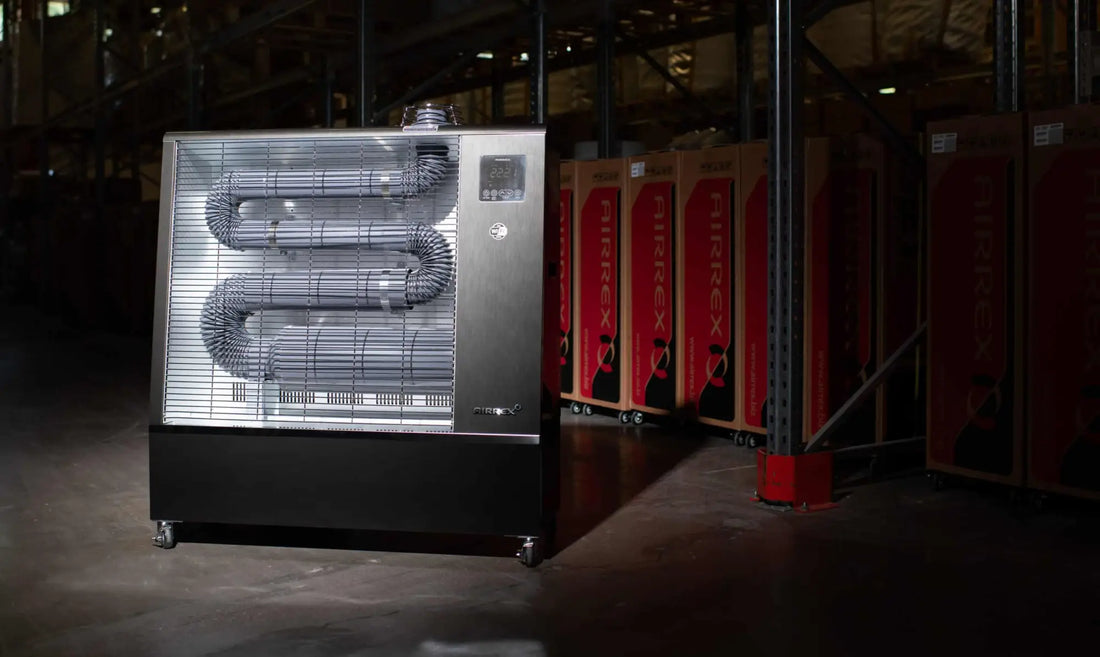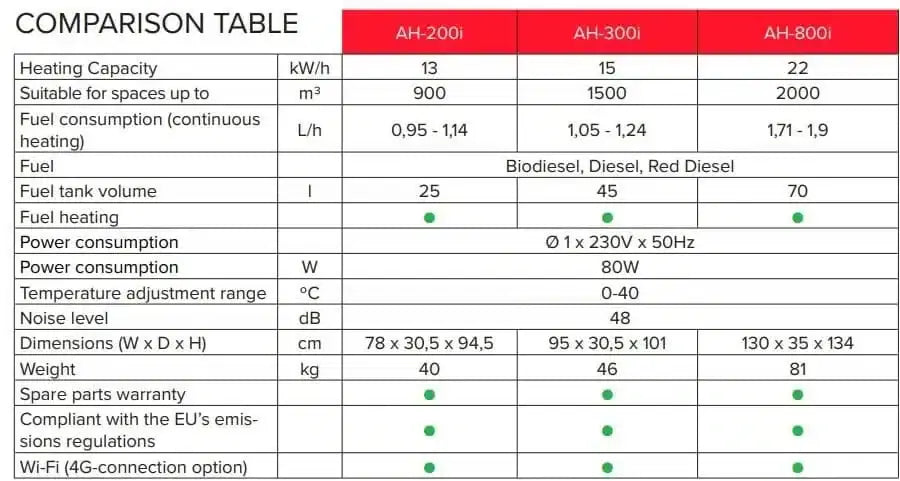
Airrex Heaters
Share
Is a Diesel Heater Safe to Use Inside?
Most diesel heaters, if used inside need a lot of ventilation and door opens to get rid of the fumes and smell. However, the Airrex diesel heater is perfect for indoors as the burner system is 99.9% clean burning which means there is no horrible smell or noxious gases in the air. For indoor uses such as Marquees, restaurants, Farm Shops, conservatories, and even customers’ kitchens.
Do Diesel Heaters Use a Lot of Energy?
Some diesel heaters can use a lot of energy, however, the Airrex diesel heaters only use electricity to power the information screen and the ignition for the burner. The heater will use 80w on start-up however when the heater is working the electric usage will be even less than 80w.
Are Diesel Heaters Expensive to Run?
That depends, there has been a steep drop in diesel prices in the last few months which means diesel heaters are cheaper to run now than they were last year. Airrex heaters are the most fuel-efficient heaters in the marketplace. Depending on the size of the Airrex heater, fuel usage is from 0.95 litres an hour for the smallest heater up to 1.8 litres for the biggest heater. However, these figures are based on the heater running continuously.
So, depending on your what size of space you need to heat, your fuel consumption will vary. Smaller spaces would benefit from the Airrex AH200i, larger spaces should look for the Airrex AH800i and anything in between we would advise you go for the Airrex AH300i.
What are the Perks of Diesel Heaters?
Diesel heaters provide consistent and robust heat which is cost-effective and more eco-friendly than other heating systems. Diesel heaters can be a very valuable bit of kit in remote locations or where mains electricity or gas is scarce.
Why are Diesel Heaters Noisy?
Airrex heaters aren’t noisy at all and there is no fan creating noise. This means Airrex heaters only produce 48dB which means they are one of the quietest diesel heaters on the marketplace.
